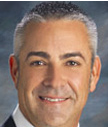Ontario and Los Angeles are $400 million apart with regard to a sales price for Ontario International Airport, according to an analysis of information available to the Sentinel.
For more than two years Ontario city officials have been growing increasingly frustrated over the rejection of their overtures to have the city of Los Angeles, to whom Ontario deeded the airport in 1985, relinquish ownership and control of the aerodrome back to Ontario.
At varying points, Ontario officials have suggested that Los Angeles should merely deed it back to them at no consideration. While Los Angeles officials have refrained from making public statements that have conveyed their dismay, sources tell the Sentinel some of those officials within the division devoted to airport operations, known as Los Angeles World Airports, have been so insulted by what they consider to be the city of Ontario’s presumptuousness that they have refused so far to carry on a serious dialogue with Ontario over the matter. In particular, Los Angeles World Airports executive director Gina Marie Lindsey is incensed with Ontario and its officials.

Gina Marie Lindsey
In the meantime, with a general contraction of the airline industry, Los Angeles World Airports (LAWA) has instituted billing practices and operational policies that have made it more expensive for airlines to operate out of Ontario as opposed to at Los Angeles International Airport (LAX), resulting in an even further decrease in ridership out of Ontario Airport.
In Ontario and surrounding San Bernardino County communities, there has been growing concern that the downturn in passengers at Ontario Airport is harming the local economy. Officials have suggested that by returning the airport to local control, policies can be put in place that will reduce costs for the airlines to operate out of Ontario. Nevertheless, the efforts to achieve that end have further alienated Los Angeles officials, exacerbating the situation.
A series of decisions over the last 45 years, each considered a practical and logical step toward resolving an exigent problem at that time, has led to the current circumstance.
Founded as Ontario Municipal Airport in 1929, the facility in 1946 had changed its name to Ontario International Airport because at that point it had begun to handle transpacific cargo flights. Nevertheless, it remained pretty much a small regional field. In 1949, the facility took a step forward when Western Airlines began flying into and out of Ontario, with sporadic flights to Palm Springs, Los Angeles, San Francisco and Sacramento. An east-west runway was built in the 1950s to augment the original northeast-to-southwest runway, and in 1955 Bonanza Airlines, with flights to and from Los Angeles and Las Vegas, set up operations in Ontario.
In 1957, well under 30,000 passengers passed through Ontario Airport. Over the next decade, use of the facility would increase, but at not much more than a glacial pace. In 1959, Ontario was designated an alternative to Los Angeles International Airport when LAX was fogged in. By 1966, passenger traffic had increased to just under 200,000 passengers per year, but the prospects for further expansion seemed dim.
The main runway was dilapidating, with spots on the tarmac that were caving in. FAA inspectors issued warnings that repairs to the main runway would need to be made or the airport would be shut down. The facility did not feature a paved parking lot, but rather a gravel one. Efforts to lure other airlines to Ontario had been ongoing for years, but were unsuccessful, as airline executives saw insufficient financial reward to scheduling flights into or out of such a remote location.
The Ontario City Council formed a committee composed of then-mayor Howard Snider and then-councilman Sam Crowe to approach Los Angeles municipal officials and the L.A. Department of Airports to negotiate a “merger” that would result in upgrades to the airport and an increase in passenger traffic.
A deal was worked out and accepted by the Ontario City Council on March 1, 1967 by which the city of Ontario and the city of Los Angeles created a joint powers authority for the purposes of managing, operating and enhancing the airport. The Los Angeles Department of Airports and LAX pledged to use their influence with the airlines to induce them to establish flights into and out of Ontario. Furthermore Los Angeles, through its Department of Airports committed to making improvements worth at least $20 million in 1967 dollars, to include the refurbishing of the east-west runway and the addition of a second heavy duty runway, the expansion of taxiways and improvements to the terminals and the purchase of 350 acres of vineyards to allow for expansion on the airport’s east end. The Los Angeles Department of Airports, which would later transform into the entity now known as Los Angeles World Airports, took on management of the airport on November 1, 1967. Under the terms of the deal, title on the airport itself was to be transferred to the city of Los Angeles after the achievement of several designated milestones, including passenger traffic levels, runway improvements, and terminal construction.
By 1969, flights out of Ontario dramatically increased. Continental started nonstop flights to Denver and Chicago, Air California started runs to San Jose, and PSA started flights to San Francisco. Western added flights to Salt Lake City. In 1970 United initiated flights to and from Chicago. American Airlines began flights to Dallas and, later, to Chicago. Nevertheless, a benchmark of 10 million passengers at the airport by 1975 was not achieved as John Wayne Airport in Orange County expanded dramatically, becoming the second busiest airport in the region after LAX, a spot coveted by Ontario. In 1981, a modern, second east-to-west runway was built, necessitating the removal of the old northeast-to-southwest runway. Sometime thereafter, Los Angeles officials stepped up pressure on Ontario officials to have them cede ownership of the airport in total to Los Angeles.
Ontario, at that time led by mayor Robert Ellingwood, resisted, maintaining that all of the criteria specified in the transfer portion of the 1967 agreement had yet to be met. Tensions mounted between the cities when Ontario began levying a parking tax at the airport, which L.A. objected to as unwarranted and illegal. That led to a lawsuit filed by Los Angeles against Ontario and a countersuit from Ontario. Ellingwood pressed for the recission of the joint powers agreement and for Ontario to take full control of the airport. Los Angeles, however, had at that time control over the revenue being generated at the airport and was bankrolling the cost of operations there. Los Angeles threatened to itself stand down from the joint powers agreement, leaving Ontario in the position of paying all operational costs. His four council colleagues differed with Ellingwood over the issue of Ontario reasserting control at the airport, believing the city did not have the financial means to operate it. On February 19, 1985, at a council meeting when Ellingwood was too ill to attend, the council voted 4-0 to transfer title to the airport to the city of Los Angeles. Ellingwood refused to endorse the transfer documents with his signature. Instead, the documents carried the signature of mayor pro tem Faye Myers Dastrup. Los Angeles took over ownership officially on July 1, 1985.
In 1987, the departure runway was extended to the east. In 1997 and 1998, Los Angeles built two modern 530,000-square foot terminals at the airport at a cost of $270 million. In 2005-2006, the airport’s departure runway was repaved, received storm drains, and runway lighting was improved. The airport’s taxiways were widened. The same year Aeroméxico started seasonal flights to Guadalajara and Mexico City, making Ontario a true international airport. The airport was also renamed Ontario/LA International Airport, ostensibly to avoid confusion with an airport in Canada.
In 2007, use of the airport peaked, with 7.2 million passengers enplaning there and using its terminals. In recent years, Ontario Airport has seen its use decline. In 2008, 6.2 million passengers took flights from the airport, a drop of 13.5 percent compared to 2007. In 2009, the airport had 4.95 million passengers pass through it. That trend continued in 2010, with 4.8 million travelers flying from Ontario International. Simultaneously Los Angeles World Airports undertook a flurry of improvements at LAX intended to make traveling in or out there more convenient to passengers.
In the last year, passenger volumes in Ontario continued to decline, with travel at Los Angeles International Airport picking up. Just under 4.6 million passengers took flights out of Ontario International in 2011. At Los Angeles International this year, passenger traffic has increased by nearly 6 percent.
In 2009, Ontario officials began a dialogue with Los Angeles World Airports officials about combating the downward trend in passenger traffic at Ontario. But Los Angeles airport officials were not keen on surrendering any share of the market Los Angeles International had captured in the aftermath of extensive improvements to that airport.
Ontario officials gravitated toward the conclusion that reacquiring the airport was paramount and that not leaving its destiny in the care of Los Angeles officials, whose first loyalty consisted in keeping Los Angeles International Airport thriving, was the only realistic approach to the problem.
They began pushing Los Angeles to allow a public agency-to-public agency transfer of the airport at no consideration, reversing the 1985 action.
Los Angeles officials balked at that.
“Over the past 45 years, Los Angeles World Airports has made significant investments to modernize Ontario Airport,” said Gina Marie Lindsey, the executive director of Los Angeles World Airports. “Over $560 million in airport capital improvements have been made utilizing funds from a combination of Los Angeles and Ontario airport revenues, Federal Aviation Administration grants and bond proceeds secured by Los Angeles World Airports.”
Without publicly stating so, Lindsey and other Los Angeles World Airport Officials were privately advising members of the Los Angeles City Council to seek to recover as much of the money put into improvements at Ontario Airport since 1967 as possible. One unconfirmed report that reached the Sentinel was that LAWA was prepared to write down $110 million of the cost of improvements but was insisting that the airport be sold for no less than $450 million.
Ontario has not received an official offer or proposed sales price from L.A.
Ontario city manager Chris Hughes dismissed as “untrue” and “not factual” the assertion that Los Angeles had invested $560 million at Ontario Airport.

Chris Hughes
“The city of Los Angeles has not spent a dime at Ontario Airport,” Hughes said. “If they could show me proof, I’d love to see it. What it takes to operate an airport is the money the airlines put up. The money consists of passenger facility charges and federal grants. It is a closed system. That is absolutely not the city’s revenue.”
Los Angeles taxpayers had not subsidized the operation of Ontario Airport, Hughes said, and did not deserve to be paid back for relinquishing control of the airport. On the contrary, he said, Ontario has spent its own money in uses dedicated to improving the airport.
“The city of Ontario has spent well over $100 million in federal grants and local matching funds dedicated to ground access projects to make the airport more accessible,” Hughes said.
He said he could not speak to the advisability of the past city council’s decision to cede the airport to Los Angeles. “We started our partnership with LA in 1967 with the joint powers agreement,” he said.” In 1985 we amended the JPA and transferred the property to the city of Los Angeles. I was not here at the time, so I cannot really comment on that.”
Hughes said the exchange could be made as a public agency-to-public agency transaction, at no consideration.
“A public-to-public transfer is done without any monetary exchange,” he said. “There is no value to the airport. The land is worth zero. By definition, the FAA controls airports.”
Hughes would not discuss reports that Ontario had offered Los Angeles $50 million for the airport.
“I have been very clear that what we’re doing is submitting a proposal to their elected officials in confidence and we will not discuss our proposal before the decision makers have a chance to discuss and vote on it,” Hughes said. “I do not feel it is appropriate to discuss the details of our proposal at this time. Negotiations are in closed session and behind closed doors for a reason.”
Hughes did acknowledge, however that “Ontario has made a proposal to the city of Los Angeles for the transference of title, management and operations of the airport that is comprehensive and fair.”
Hughes insisted that Ontario Airport is being mismanaged under the stewardship of Los Angeles World Airports.
“The airport continues on a downward spiral,” he said. “The marketing budget for Ontario Airport, which was one million dollars a year, is now in the range of $300,000 to $400,000. Why is it the most expensive medium hub airport in the county? They are not marketing it. We are back to the same levels coming through there when we had the old terminal.
“I disagree with LAWA officials when they say LAX is not competing with Ontario,” Hughes stated. “Ontario continues to lose flights and yet there are 1.3 million more people driving into Los Angeles annually because they are flying out of LAX instead of Ontario. That should not be, and it is because Ontario is losing flights to LAX. It is a health and environmental concern.”
Hughes continued, “The region has lost half a billion dollars since 2007 and lost 9,000 jobs. Los Angeles World Airports has done nothing to stop the bleeding and improve passenger traffic at Ontario.”
Currently, airlines are paying nearly a third again as much in enplaned passenger rates at Ontario International as at LAX. At Ontario, that charge is $14.50 per traveler, including a passenger facility charge. The cost per enplaned passenger at LAX is $11.
Hughes said that if Ontario had control of the airport it could immediately make it competitive pricewise with LAX.
“The city of Los Angeles imposes an administrative fee of 15 percent,” he said. “If Ontario took over, we could eliminate that and reduce the passenger facilities fee by four bucks.”
Hughes said Los Angeles World Airport’s neglect is threatening to kill Ontario Airport.
“We need an airport to sustain the economy. When LA and John Wayne fill up to capacity, we need to have it to handle the growth of southern California in the future,” Hughes said. “What is concerning Ontario is we are in a downward spiral and we are losing passengers. We have not hit bottom. What is the tipping point? Our relationship was fine until they started ignoring Ontario Airport. I don’t take our 40-year relationship lightly but I don’t take a half billion loss to our economy lightly, either. The airport is one of the largest economic drivers of this area. Why is it that every other local airport under local control fared better in the recession?”
Lindsey fired back at Hughes.
“As aviation industry data supports, LAWA has not mismanaged the airport as has been implied by the city of Ontario,” Lindsey said. “The airport is built to a capacity that is far above what the current economy of the Inland Empire can support. Combined with airline response to the economic recession, including cutbacks in the number of flights and available seats along with airline consolidation and wholesale withdrawal from medium-hub airports, you have a situation that will not improve in the near future. It is ridiculous for any governmental body to presume that an airport developed and modernized at the expense of another city is entitled to a ‘transfer’ of that asset. Ontario has enjoyed decades of benefit from LAWA’s time and investment in Ontario Airport, and now with a slump in the economy, expects to wrest the asset back for a sum far below its real worth.
“LAWA has refrained from criticizing the City of Ontario because we continued to hope our consistent invitations (three to be specific) for them to participate in marketing ONT would be accepted,” Lindsey continued. “It is now clear they have only one objective: to take the asset the city of L.A. built, at a foreclosure price.”
On January 23, the board of Los Angeles World Airports ruled out making a sale of Ontario Airport to Ontario and indicated that it would not entertain any transfer or change of operating and managing authority at the airport for at least two years.
On January 24, however, Los Angeles councilmen Dennis Zine and Bill Rosendahl called for a study of how to return LA/Ontario International Airport to Ontario. Their motion, which was not voted upon by the full council but instead referred to the council’s Trade, Commerce and Tourism Committee, requested the city’s Department of Airports, along with the city administrative officer and chief legislative analyst, perform a study within 90 days to “determine the fair market value of Ontario Airport, including the land, facilities, financial assets and liabilities, then report on the process by which a sale of this facility could occur between the city of Los Angeles and the city of Ontario.”
Hughes said he was heartened by Zine and Rosendahl’s motion.
“Ontario is optimistic and we are looking for an opportunity to revive our talks and sit down with Los Angeles and effect a transfer,” he said.




